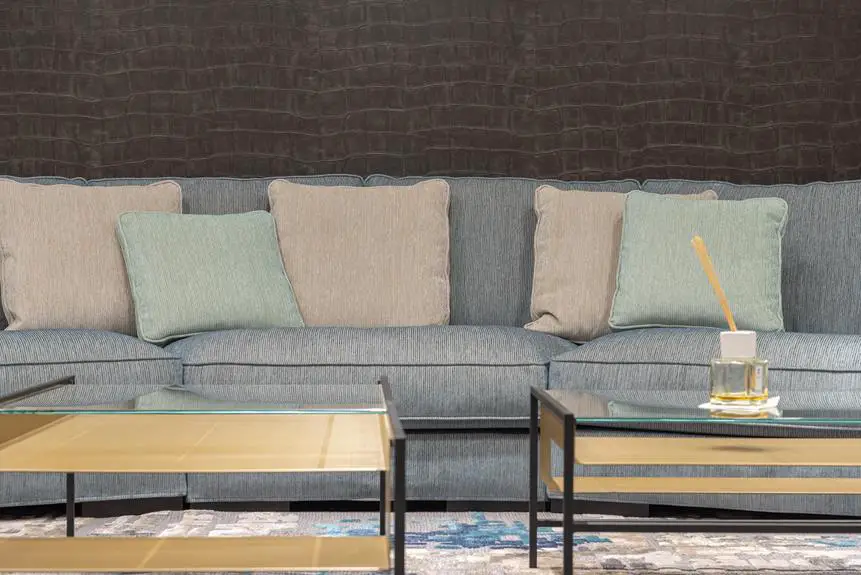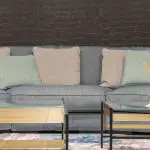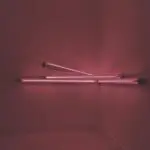Do you ever wonder if the fluorescent tube light above your fabric affects its color accuracy?
Discovering whether a fluorescent tube light diffuser can enhance fabric color is crucial for achieving precise results in your projects. This study delves into the impact of fluorescent lighting on fabric color and explores the science behind fluorescent tube light diffusers.
By understanding the factors that influence fabric color accuracy and weighing the advantages and disadvantages of using a fluorescent tube light diffuser, you can make an informed decision.
Stay tuned for practical tips on selecting the right fluorescent tube light diffuser and real-world applications of its use to achieve optimal fabric color results.
Key Takeaways
- Different lighting conditions affect fabric color perception
- Fluorescent lighting has a direct impact on fabric evaluation and production processes
- Fluorescent tube light diffusers enhance color vibrancy and accuracy
- Consider individual color perception abilities when assessing fabric color accuracy
Understanding the Impact of Fluorescent Lighting on Fabric Color
To truly understand the impact of fluorescent lighting on fabric color, you should observe how different materials appear under various types of fluorescent light. Color perception in the textile industry is heavily influenced by lighting conditions. The accuracy of color under different lighting sources directly affects fabric evaluation and production processes.
In the textile industry, achieving color accuracy is crucial, and lighting plays a pivotal role in fabric assessment. Various light diffusion technologies are being explored to mitigate the impact of fluorescent lighting on fabric color. Understanding how different fabrics react to specific lighting conditions is essential for ensuring color precision in the textile industry.
The Science Behind Fluorescent Tube Light Diffusers
Fluorescent tube light diffusers function by altering the distribution of light emitted, thereby influencing how fabrics are perceived under different lighting conditions. The science behind fluorescent tube light diffusers lies in their ability to scatter and soften the harsh direct light produced by fluorescent tubes.
When light passes through the diffuser, it undergoes multiple scattering events, resulting in a more uniform distribution of light across the fabric surface. This diffusion process reduces glare and shadows, leading to improved color perception and fabric appearance. The diffuser's material and design play a crucial role in controlling light diffusion. Different materials and surface textures can affect the angle and extent of light scattering, ultimately impacting color rendition.
Understanding the science of light diffusion is essential for optimizing fabric color perception in environments illuminated by fluorescent lighting. By manipulating the way light interacts with fabrics, fluorescent tube light diffusers can enhance color vibrancy and accuracy, offering a more faithful representation of fabric hues. This scientific understanding underpins the potential for fluorescent tube light diffusers to positively influence fabric color perception in various applications.
Factors to Consider When Assessing Fabric Color Accuracy
Consider factors such as light intensity, color temperature, and fabric texture when assessing fabric color accuracy under fluorescent lighting.
- Color Perception: Understand that individuals perceive color differently. It's essential to consider who'll be assessing the fabric color and their color perception abilities.
- Lighting Conditions: Be aware that different fluorescent lighting conditions can affect how fabric colors appear. Factors such as the type of fluorescent tube used and its age can impact color accuracy.
- Light Intensity: Recognize that varying light intensities can lead to differences in color perception. Ensure consistent lighting levels when assessing fabric color accuracy.
- Color Temperature: Take into account the color temperature of the fluorescent lighting. Different color temperatures can affect how fabric colors are perceived.
- Fabric Texture: Note that fabric texture can influence how colors appear under fluorescent lighting. Smooth and reflective fabrics may show colors differently compared to textured or matte fabrics.
Pros and Cons of Using a Fluorescent Tube Light Diffuser
When assessing fabric color under fluorescent lighting, you can enhance color accuracy by using a fluorescent tube light diffuser. However, before deciding to use a diffuser, it's important to consider the pros and cons of this approach. Here's a table that outlines the advantages and disadvantages of using a fluorescent tube light diffuser:
| Pros | Cons |
|---|---|
| Improved Visibility | Reduced Energy Efficiency |
| Balanced Light Output | Installation Complexity |
| Reduced Glare | Potential Light Loss |
Using a fluorescent tube light diffuser can significantly improve the visibility of fabric colors under fluorescent lighting, creating a more accurate representation. Additionally, it helps in balancing the light output and reducing glare, resulting in a more comfortable environment. However, it's essential to note that using a diffuser may lead to reduced energy efficiency due to potential light loss and increased installation complexity. Moreover, there might be a trade-off between improved visibility and energy efficiency when using a diffuser. Therefore, it's crucial to weigh these pros and cons to determine if using a fluorescent tube light diffuser is the right choice for your specific needs.
Tips for Choosing the Right Fluorescent Tube Light Diffuser
To choose the right fluorescent tube light diffuser, assess your specific lighting needs and prioritize the features that will best enhance your fabric color assessment. Consider the following tips:
- Lighting Conditions: Evaluate the existing lighting conditions in your workspace. Choose a diffuser that can effectively adjust the intensity and distribution of light to suit your requirements.
- Color Accuracy: Look for a diffuser that provides excellent color rendering properties. This will ensure that the fabric colors appear true to life under the diffused lighting.
- Adjustability: Opt for a diffuser that offers adjustable settings, such as brightness and color temperature control. This flexibility allows you to tailor the lighting to best showcase fabric colors.
- Compatibility: Ensure that the diffuser is compatible with your existing fluorescent tube lights. Compatibility is crucial for achieving optimal performance.
- Durability: Select a diffuser made from high-quality materials that can withstand continuous use. A durable diffuser will provide long-lasting performance and maintain consistent lighting conditions for accurate fabric color assessment.
Real-world Applications and Results of Using a Fluorescent Tube Light Diffuser
Enhance your fabric color assessment in real-world applications by utilizing a fluorescent tube light diffuser. The use of a fluorescent tube light diffuser can have a significant impact on productivity and energy efficiency in various settings. Below is a table outlining the real-world applications and results of using a fluorescent tube light diffuser.
| Real-World Application | Impact on Productivity | Energy Efficiency |
|---|---|---|
| Office Environments | Reduced eye strain and fatigue, leading to improved focus and productivity | Lower energy consumption due to optimized light distribution |
| Retail Settings | Enhanced display of fabric colors, leading to better customer engagement | Efficient use of lighting, contributing to cost savings |
| Manufacturing Facilities | Improved color assessment for quality control processes | Reduced energy usage through better light dispersion |
In office environments, the diffuser reduces eye strain and fatigue, leading to improved focus and productivity and lower energy consumption. In retail settings, it enhances the display of fabric colors, resulting in better customer engagement and cost savings. In manufacturing facilities, it improves color assessment for quality control processes and contributes to reduced energy usage.
Frequently Asked Questions
Can a Fluorescent Tube Light Diffuser Be Used With Different Types of Fabrics, Such as Silk or Velvet?
Yes, a fluorescent tube light diffuser can be used with different types of fabrics like silk or velvet. Silk benefits from the diffused light's softness, and velvet enhancement is achieved through reduced glare and more even illumination.
Are There Any Potential Health Risks Associated With Using a Fluorescent Tube Light Diffuser?
Using a fluorescent tube light diffuser may pose potential health risks due to exposure to harmful UV rays. It's important to consider lighting compatibility and maintenance requirements to minimize health concerns associated with prolonged use.
How Does the Cost of a Fluorescent Tube Light Diffuser Compare to Other Methods of Improving Fabric Color Accuracy?
When comparing cost, consider fabric quality. Fluorescent tube light diffusers may improve color accuracy, but LED lights could be cheaper long-term. Evaluate lighting types for the best fabric results that align with your budget and goals.
Can a Fluorescent Tube Light Diffuser Be Used in Conjunction With Other Types of Lighting, Such as Natural or LED Light, to Improve Fabric Color Accuracy?
Using a fluorescent tube light diffuser in conjunction with natural light or LED light can improve fabric color accuracy. The diffuser can help balance and soften the light, providing more accurate representation of colors, especially for different fabric types.
Are There Any Specific Maintenance or Cleaning Requirements for a Fluorescent Tube Light Diffuser?
To keep your fluorescent tube light diffuser in top shape, remember to clean it regularly with a mild detergent and soft cloth. Check for any damage or discoloration, as this may affect fabric color compatibility. Regular maintenance is key.
- Why Is Red Velvet Not Red? - April 25, 2024
- How Do You Describe Velvet Fabric? - April 25, 2024
- How Strong Is Velvet? - April 25, 2024







